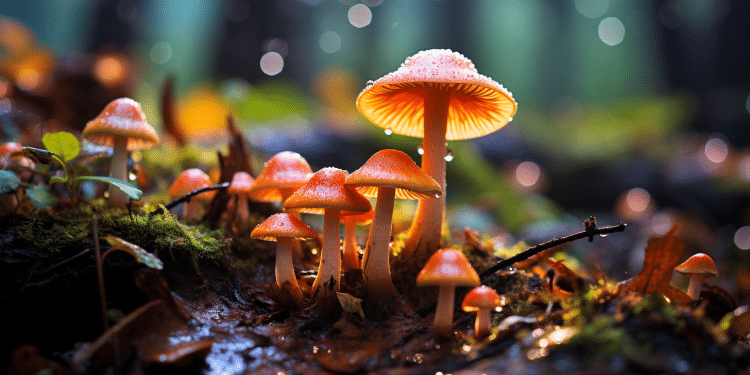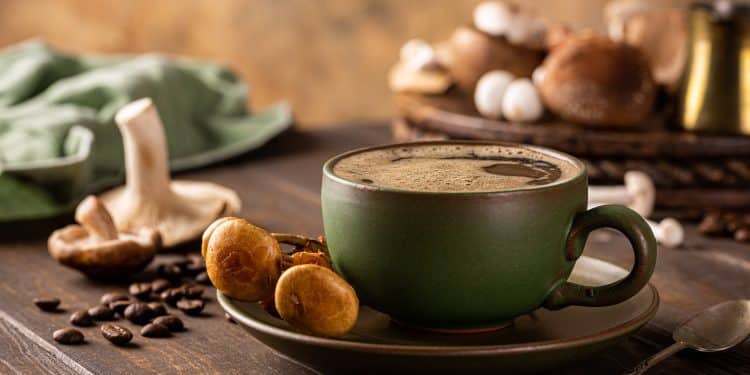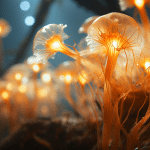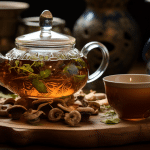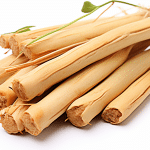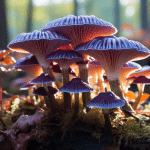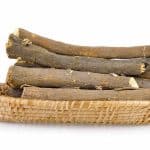The Trippy History of Psilocybin: From Ancient Mushroom Rituals and Beyond
Magic mushrooms are integral to our history, culture, and nutrition. They can be used to our advantage, e.g as full of protein food, or as a way to harm people through poisoning. What concludes this controvertial mushroom nature is that they can send you on a spiritualistic journey through the depths of consciousness, an ambiguous activity made possible by psilocybin. Let’s look at the history of magic mushrooms, from ancient rituals to magic mushrooms toronto.
The Origin of Psilocybin Mushrooms
According to American mycologist Paul Stemets, the fact that humans are among the 23 primates that eat mushrooms speaks to their direct contribution to our evolution. There is even the “stoned ape” hypothesis advanced by American ethnobotanist and psychedelic advocate Terence McKenna in his book Food of the Gods. The essence of the hypothesis is that upright man evolved into a sentient man thanks to hallucinogenic mushrooms.
Settling out of Africa, archanthropus began to explore new flora and fauna and, with them, the feces of living creatures, which served as a breeding ground for certain species of psilocybin fungi.
According to McKenna, it was psilocybin that contributed to the rapid development of brain compartments and the evolution of cognitive abilities in upright man. The researcher also argued that the relationship with hallucinogenic mushrooms was crucial in forming several religions, including world religions such as Islam, Christianity, and Judaism.
Scientific circles do not accept the “stoned monkey” hypothesis.
When Did Mushrooms First Appear?
The history of hallucinogenic mushrooms goes back thousands of years, and scientists have not yet been able to determine when humankind first tasted them.
Central America (especially Mexico) has a wealth of hallucinogenic plant varieties known to scientists. Many of these plants were used by the Indians in rituals and religious activities. Such hallucinogens include:
- Peyotele cactus;
- Psilocybin mushrooms (Psilocybe bohemica and others);
- Liana “Ooluca”;
- “Shepherdess Mary’s Leaves” .
The first mention of the use of psychedelic fruit bodies for “divine” purposes that has come down to us in written form is found in the descriptions of chroniclers and naturalists who came from Spain to Mexico in the 16th century, a short time after Cortés conquered it.
The Franciscan monk Bernardino de Sahagún is considered an authority among the first authors. He wrote “A General History of the Events of New Spain”. It’s not an ultimate truth, but according to this book, the friar represented the priests as well as the ordinary rank-and-file Aztecs. What is more, he actively used mushrooms, and not only for treatment or their “magical” properties but also for other purposes:
- Entertainment;
- Rest;
- Restoration of vital forces.
It is well-known that at the coronation of Montezuma, the Aztec emperor, “magical” fruiting bodies could be found among the dishes on the table. The Aztecs called them “teonanactl”, which translates as “sacred mushroom” or “flesh of a god.” Besides Mexico, they were tasted in El Salvador, Guatemala and other modern countries.
Scientific Interest in Magic Mushrooms
William James was one of the first researchers to express a scientific interest in aesthetic intoxication. Early in the last century, he suggested that our habitual state may be only one of many forms of consciousness and that there are others, and they are hidden behind a thin partition. He also said humanity could only have a complete view of the world if it paid attention to other forms of consciousness.
Psilocybe cubensis, a species of psilocybin mushroom, was first described by an American botanist in 1906. His name was Earl, and it happened in Cuba. In the 1930s, an anthropologist and a botanist from Harvard discovered Pcilocybe growing in Latin America. In the same period, American anthropologists, led by J. Bassett Johnson, attended secret ritual ceremonies in the Mexican state of Oaxaca.
At this event, they saw the use of psilocybin mushrooms, but the group participated in the celebration only as spectators, and they were not allowed to taste the treats. It was not until 1938 that a botanist from Harvard University, already familiar to us, obtained several specimens of psilocybe in a southern Mexican village. It still remained a long road from ancient Mexican and Maya mushrooms to magic mushrooms toronto.
Psilocybin and Psilocin Appearance in Science
At first, information about these psychedelics was only available to readers of specialized scientific journals, meaning that few people knew about them. Chemists decided to find out what kind of substance inside the fruit body was causing such a reaction in the taster’s mind.
The whole process was like a cheap detective story. The Central Intelligence Agency also had plans for such a perspective study.
The intelligence officers wanted to know if it could be used for the following purposes:
- Gnawing out the truth;
- Zombifying people;
- Mass brainwashing and so on.
In the 1950s, specimens of Stropharia made their way to Switzerland to Albert Hoffman, who invented LSD. In ’57, it is based on the material he received from Heim, Albert isolated and synthesized substances from hallucinogens that have a similar effect to LSD. These substances are now called psilocybin and psilocin, as conceived by Hoffman.
The results of his research were first published a year later. After that, Hoffman’s pharmaceutical company, Sandoz, launched the production of commercial psilocybin, which was supplied to research laboratories from various states.
How Does Psilocybin Work?
We know from a general biology course that fungi consist of a fruiting body and a mycelium, a structure that performs protective, reproductive, and nutritional functions. Unlike the human protective covering with five layers, the mycelium consists of only one. Some mushroom species produce a substance – psilocybin – to protect them from destructive environmental factors.
Psilocybin, meanwhile, is one of the psychedelics that promotes serotonin levels and activates areas of the temporal lobes. These effects manifest themselves in visual hallucinations and increased sensory and emotional sensitivity. Psilocybin is not physically addictive, but taking it can be psychologically addictive.
The team of Paul Expert, a researcher at Imperial College London, conducted an MRI study of the brain of people who have taken psilocybin under the control of doctors. Under the influence of this substance, the number of active solid neural connections between different brain areas increased in a short period. One of the possible side effects of such a condition is synesthesia: a neurological phenomenon in which sensations from one sense organ are interpreted by another (for example, one can hear colour).
Psilocybin and Mental Health
In 2019, the city and county of Denver, Colorado, decriminalized the use, possession, sale, transportation, and cultivation of hallucinogenic mushrooms of the genus Psilocybe. The move was prompted by successful pharmacological and clinical studies proving the positive effects of using psilocybin for medical purposes. Let us briefly describe some of the significant scientific developments in this field.
- 2013: a team of scientists at the University of South Florida published a study that proved the ability of small doses of psilocybin to alleviate feelings of fear and pain and stimulate the formation of new neurons in the brain – neurogenesis.
- 2014: Johns Hopkins University researchers have found that psilocybin helps 80% of subjects overcome nicotine addiction, which is considered a significant health problem. (While traditional treatments work on about 30% of patients.)
- 2016: The group of Dr. Roland Griffiths from Johns Hopkins University School of Medicine conducted a study proving the positive effect of using small doses of psilocybin on the subjects’ emotional state.
- 2017: A sociological study by Professor Peter Hendricks of the University of Alabama at Birmingham showed a correlation between the use of psilocybin mushrooms and decreased crime. Also, Celia Morgan, a professor at the University of Exeter, proved the effectiveness of psychedelic drugs for treating alcohol and drug addiction.
- 2020: In Canada, based on research at Johns Hopkins University, they authorized the clinical use of microdoses of psilocybin to normalize the mental state of cancer patients and reduce their fear of death.
These and other studies are available here.
Timothy Leary – the Magic Mushroom Propagandist
Timothy Leary is a man who, through his actions, told the masses about magical babies.
In 1960, he tasted mushrooms, and it changed both his life and the lives of so many others. Fruiting bodies had such a profound effect on Leary that he gave the rest of his life to exploring them.
In the 1960s, when he was a professor at Harvard, he conducted several hundred experiments in the company of Richard Alpert, using LSD and psilocybin. Of all the experiments, one, in particular, stands out, called the Concord Project. In the study, prison inmates (the name of the Concord prison) took psilocybin, and scientists observed them. The experiment ended unsuccessfully.
Despite this, Timothy got his fame. He is not known for his scientific research but for its consequences. The United States government believed that he seduced the younger generation and promoted the use of drugs, and this is by no means a complete list of Leary’s merits. Hippies loved and respected him, and the scientist was nominated for governor of California.
Magic Mushrooms and Their Aftereffects Prohibitions
A short time after these events, LSD was banned in the U.S., psilocybin was later banned as well, and other states passed amendments to their laws after America. No doubt LSD was and still is a powerful psychedelic, so it is foolish to consider it a drug left over from the sixties.
Interested people from all over the planet began to search for varieties of mushrooms containing psilocybin, as well as discovering ways to breed them artificially. One such enthusiast was Terence McKenna.
In 1975, he and his brother Dennis published a manual on growing magic mushrooms, describing ways to cultivate the Psilocybe Cubensis mushroom. Other authors have since published books revising and improving upon the cultivation methods suggested by Oss and Eric (Terence’s publishing pseudonym).
The Final Word
To make your favourite things more enjoyable, it is crucial to know their history. So, now you know the history of the emergence of psychedelic mushrooms in civilized countries, various exciting events, difficulties and nuances related to studying and distributing these magical legs with hats. They marched throughout the history of humankind with their hats held high, so that now you can buy their best descendants – magic mushrooms toronto.
